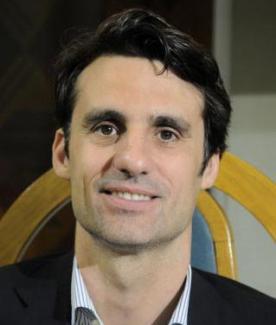What do Indian CEOs do? Time use of Indian top executives: Determinants and implications for growth
Managerial practices are a key determinant of firm productivity, and yet little is known about the managerial capital of the top executives who shape these practices. Using a novel survey instrument, we record with unparalleled detail the activities undertaken by 357 Chief Executive Officers of listed Indian manufacturing firms over a specific, exogenously chosen, window of time.
Our preliminary findings provide a unique perspective on what CEOs do, who they meet and how they organise their time. The average CEO works 39 hours a week, and the majority of time (56%) is spent in meetings in person. The average CEOs spends 43% of his time meeting employees of the company, 19% with outsiders and 11% with both types together, while the rest of their time is spent working alone.
Grouping the people CEOs interact with by functional areas we see that individuals related to production activities (logistics, business unit directors, R&D directors, suppliers) take the largest share of CEOs time- about 9 hours per week, or 35% for the average CEO. These are followed by sales, finance and management.
The share of time that CEOs dedicate to these different functions exhibits considerable variation. For instance CEOs in the bottom quartile spend a fifth of their time with representative of production, CEOs in the top quartile almost one half. We also show that the densities of the time shares for the three most important functions (production, sale and finance) overlap over a sizeable chunk of the support, suggesting that despite being in the same broad sectors, CEOs in our sample give different priorities to different functional areas.
Finally, we collect information about planning horizons, namely whether the activities were scheduled ahead of time. Surprisingly, we find that the average CEO spends one in three hours (13 hours over the course of one week) in activities that were not planned in advance. The percentage is the same for activities that involve the CEO alone or with other people, suggesting that a sizeable share of meetings is not pre-planned. Different CEOs plan to different extents. At the extremes, 10% of the CEOs spend over 90% of their time in planned activities, whereas 10% of them spend over 60% of their time on activities not scheduled ahead of time.
Matching our time use data with the firms’ balance sheets reveals that firms’ productivity is higher when CEOs work longer hours but not all CEOs’ time is equally productive. In particular, the correlation between total hours worked and output is entirely driven by planned time with firm employees, especially those belonging to the functional areas of production, finance, and labour relations.
Future research will analyse how state policies, such as labor regulations, and the characteristics of the environment, such as the quality of infrastructure, shape CEOs’ time use, with the goal of identifying which mix of policies and institutions make CEOs use their time more productively.
Project outputs

Managing the Family Firm: Evidence from CEOs at Work

Managing the Family Firm: Evidence from CEOs at Work

Managing the Family Firm: Evidence from CEOs at Work







